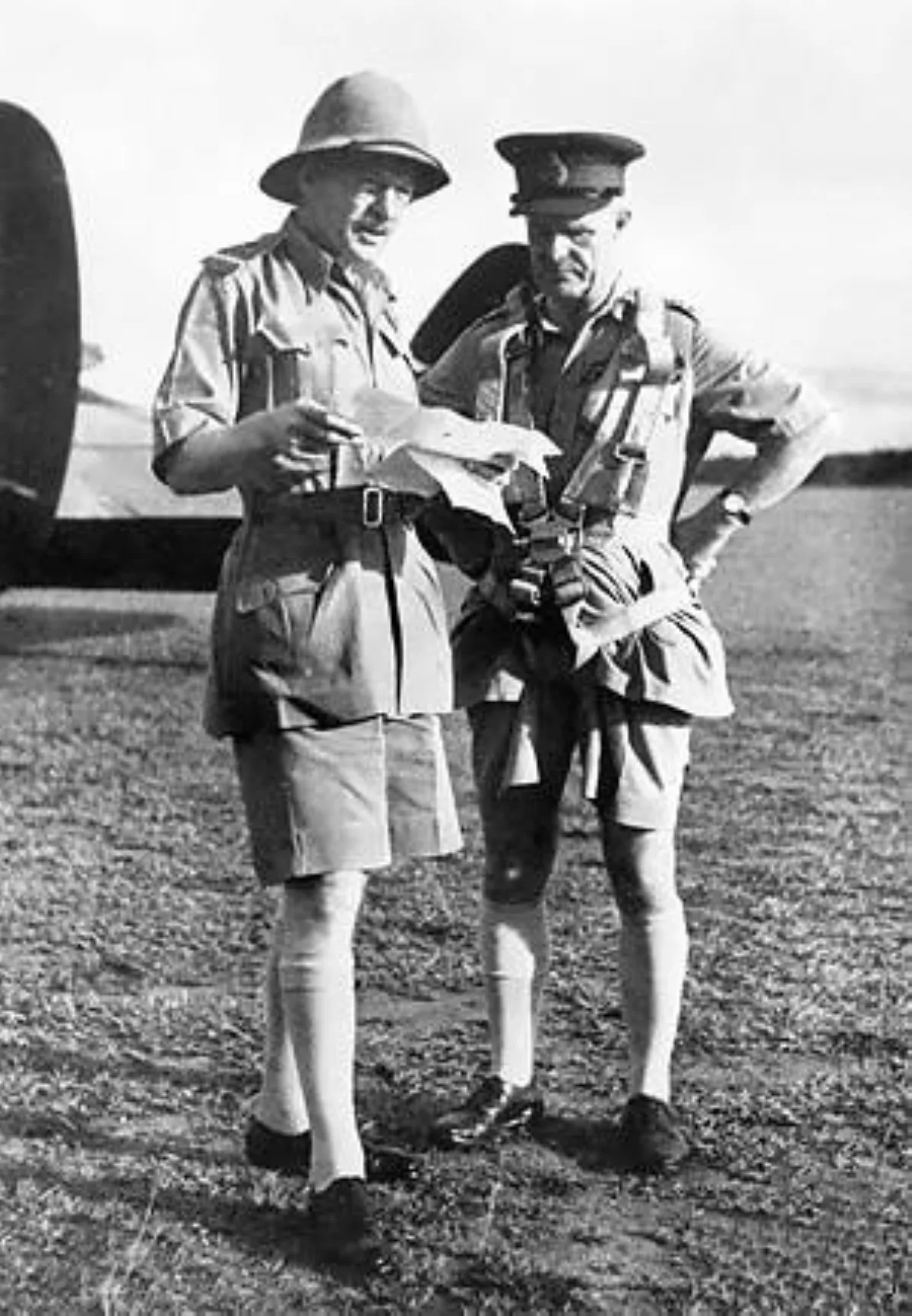 1.
1. Robert Brooke-Popham was Governor of Kenya in the late 1930s.

 1.
1. Robert Brooke-Popham was Governor of Kenya in the late 1930s.
Robert Brooke-Popham was born in England in the Suffolk village of Mendlesham on 18 September 1878.
Robert Brooke-Popham's parents were Henry Brooke, a country gentleman of Wetheringsett Manor in Suffolk, and his wife Dulcibella who was the daughter of Robert Moore, a clergyman.
Robert Brooke-Popham's education was not atypical of a man entering the British officer class.
Robert Brooke-Popham attended South Lodge School in Lowestoft from 1885 to 1891.
In January 1926, Robert Brooke-Popham married Opal Mary, the daughter of Edgar Hugonin.
Robert Brooke-Popham was attached to Air Battalion Royal Engineers during its manoeuvres of 1911, after which he decided to learn to fly.
Robert Brooke-Popham attended the flying school at Brooklands and gained Royal Aero Club certificate number 108 in July 1911.
Robert Brooke-Popham returned to his regiment, the Oxfordshire and Buckinghamshire Light Infantry, on 28 February 1912.
Robert Brooke-Popham was appointed the first Officer Commanding of No 3 Squadron.
On 20 November 1914 Robert Brooke-Popham was appointed Officer Commanding No 3 Wing of the RFC.
In May 1915 Robert Brooke-Popham was appointed the RFC's Chief Staff Officer, and in March 1916 he was the Corps' Deputy Adjutant and Quartermaster-General, which saw him granted the temporary rank of brigadier-general.
Robert Brooke-Popham served as the Controller of Aircraft Production for the remainder of the War and for some months afterwards.
Robert Brooke-Popham was rapidly promoted to air commodore when the Air Force introduced its own rank system in August 1919.
From 1919 to 1921, Robert Brooke-Popham served as Director of Research at the Air Ministry and in November 1921 he was tasked with establishing the RAF Staff College at Andover and he became its first commandant on 1 April 1922.
On 1 November 1928, Robert Brooke-Popham was appointed AOC Iraq Command.
The start of 1931 saw Robert Brooke-Popham promoted to air marshal and then posted as the first RAF officer to serve as Commandant of the Imperial Defence College.
Later that year Robert Brooke-Popham received the honorary appointment of Principal Aide-de-Camp to the King.
In late 1935, Robert Brooke-Popham took up the post of Air Officer Commander-in-Chief RAF Middle East with his headquarters in Cairo.
Robert Brooke-Popham's appointment took place not long after the outbreak of the Second Italo-Abyssinian War in October 1935 and his principal aim was to deter the Regia Aeronautica from attacking British territory in north east Africa.
In 1937, Robert Brooke-Popham relinquished his command and returned to Great Britain, retiring from the RAF on 6 March.
In Q1 1948 in Westminster Diana married Robert Brooke-Popham H H Barton, and they had Margaret H, born Q4 1948 in Ploughley, Francis C H born Q3 1951 in Halstead, and Joanna M H , born Q4 1953 in Oxford.
Robert Brooke-Popham was appointed Governor and Commander-in-Chief of Kenya in 1937 and his military expertise was useful in helping the colony prepare for a possible war with Italy.
Robert Brooke-Popham's governorship was marked by improved relations with the settlers.
Robert Brooke-Popham's predecessor had sought to dominate the political and economic life of the colony which had aroused repeated opposition from some of the settlers' leaders.
However, in courting settler opinion, some historians have criticized Robert Brooke-Popham for failing to deal with those settlers who wanted to limit African and Asian freedoms in Kenya.
In 1939 on the outbreak of the Second World War, Robert Brooke-Popham ordered the internment of all Germans in Kenya, directed that all aircraft be commandeered, and devised a plan to keep the colony's farms running.
Robert Brooke-Popham rejoined the RAF shortly after his return to Great Britain and only weeks after the outbreak of the Second World War.
Robert Brooke-Popham was first appointed as head of the RAF's training mission to Canada where he worked on the establishment of the Commonwealth Air Training Plan.
In 1940 Robert Brooke-Popham was made head of the training mission to South Africa where he continued work on the Plan.
On 18 November 1940, at the age of 62, Robert Brooke-Popham was appointed Commander-in-Chief of the British Far East Command making him responsible for defence matters in Singapore, Malaya, Burma and Hong Kong.
The Command was new and Robert Brooke-Popham was the first RAF officer to be appointed Commander-in-Chief of a joint command during a world war.
The plan relied upon force levels not available to Robert Brooke-Popham and involved violating the neutrality of Thailand, with whom a non-aggression pact had been signed the previous year.
Two days before the Malayan Campaign began, Hudsons of No 1 Squadron spotted the Japanese invasion fleet but given uncertainty about the ships' destination and instructions to avoid offensive operations until attacks were made against friendly territory, Robert Brooke-Popham did not allow the convoy to be bombed.
Inevitably, Robert Brooke-Popham was associated with the collapse and he was publicly attacked by some in Britain as the man chiefly responsible for the defeat.
In May 1942, Robert Brooke-Popham retired from active service in the RAF for the second time.
At some stage in 1942, Robert Brooke-Popham became Inspector-General of the Air Training Corps, a position he held until 1945.
Robert Brooke-Popham died in the hospital at RAF Halton in Buckinghamshire on 20 October 1953.
Robert Brooke-Popham's funeral took place at St Edburg's Church in Bicester and he was buried privately in Somerset.
Papers relating to Robert Brooke-Popham's service are held in the Liddell Hart Centre for Military Archives at King's College London.